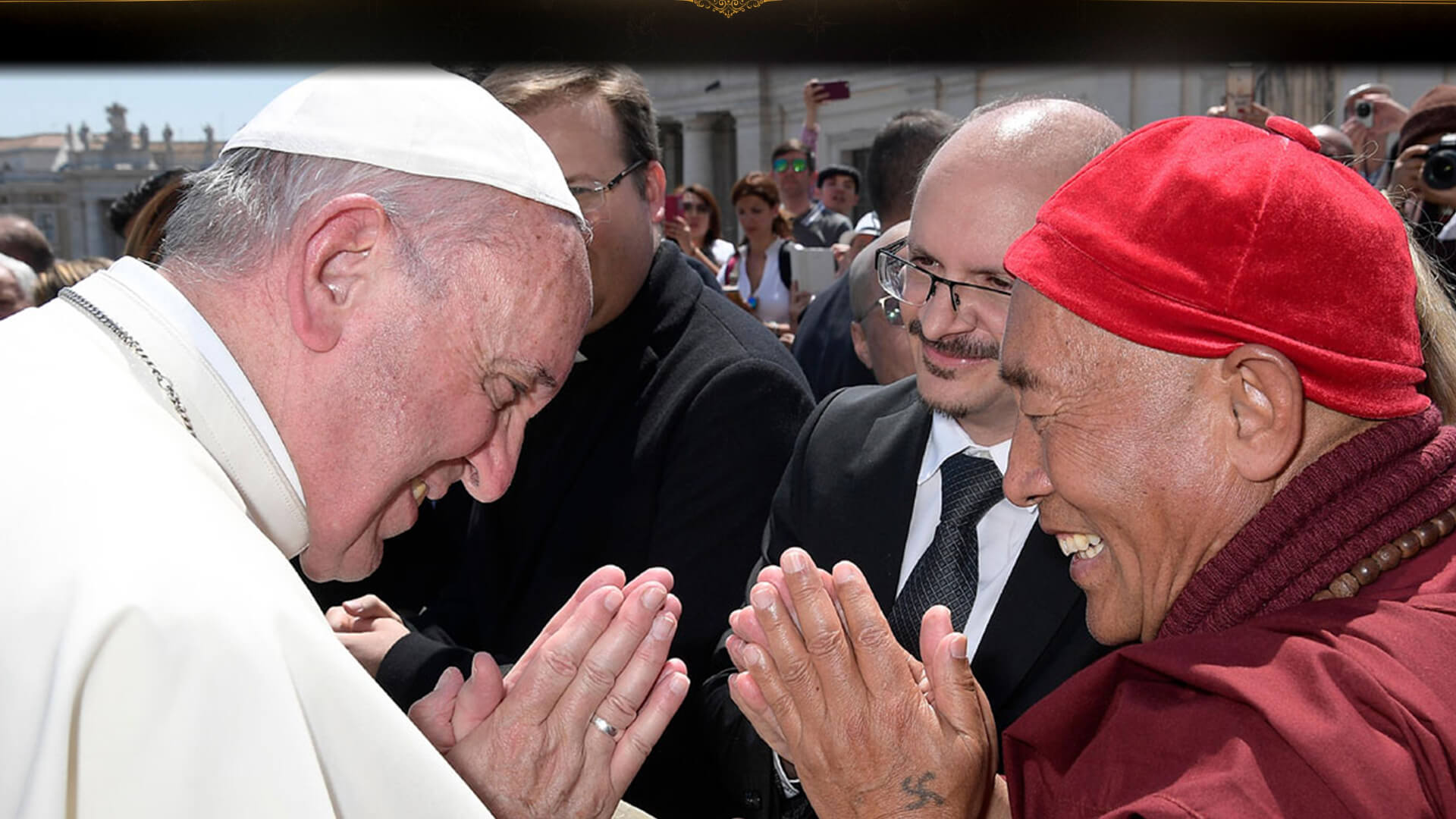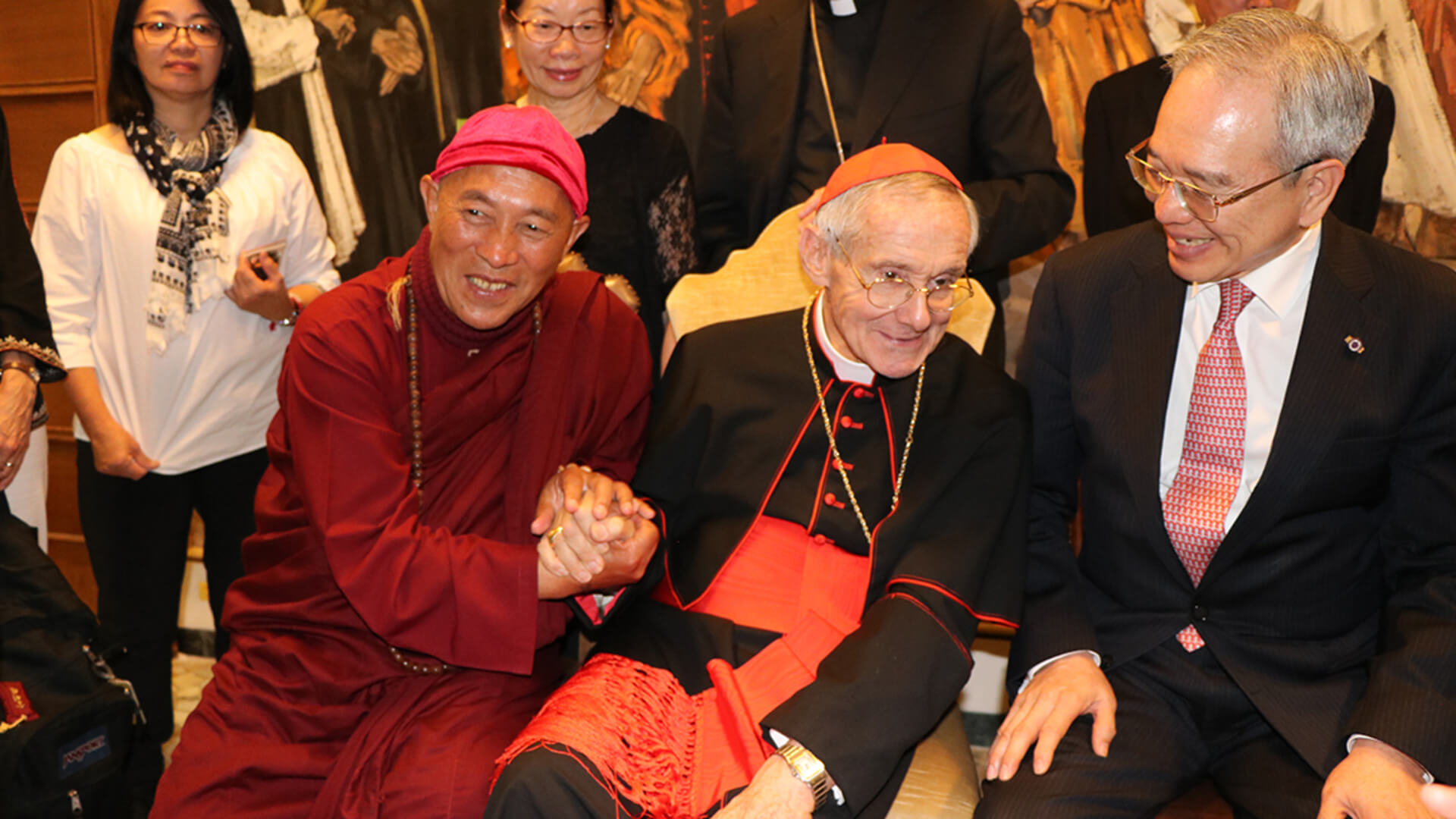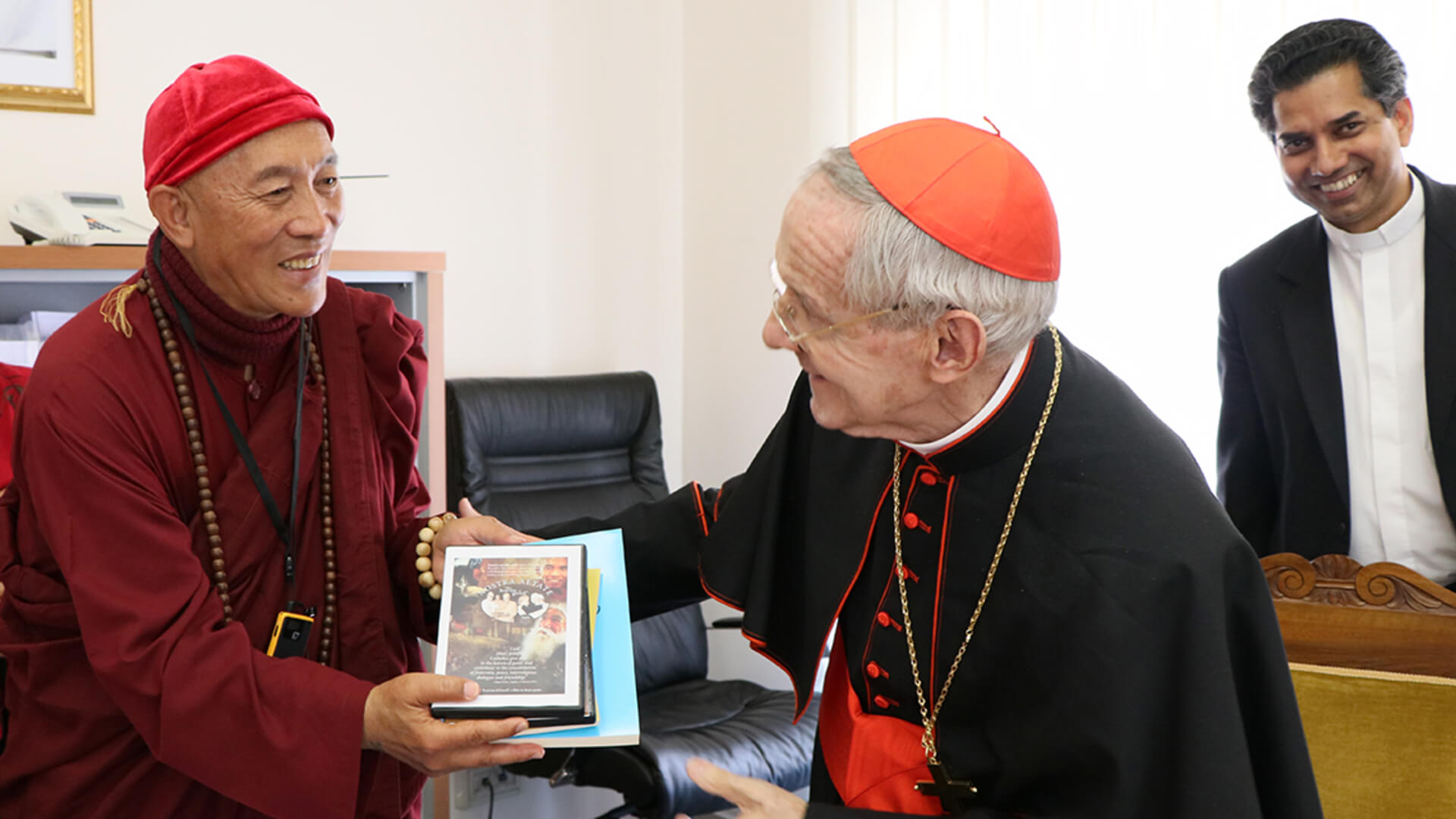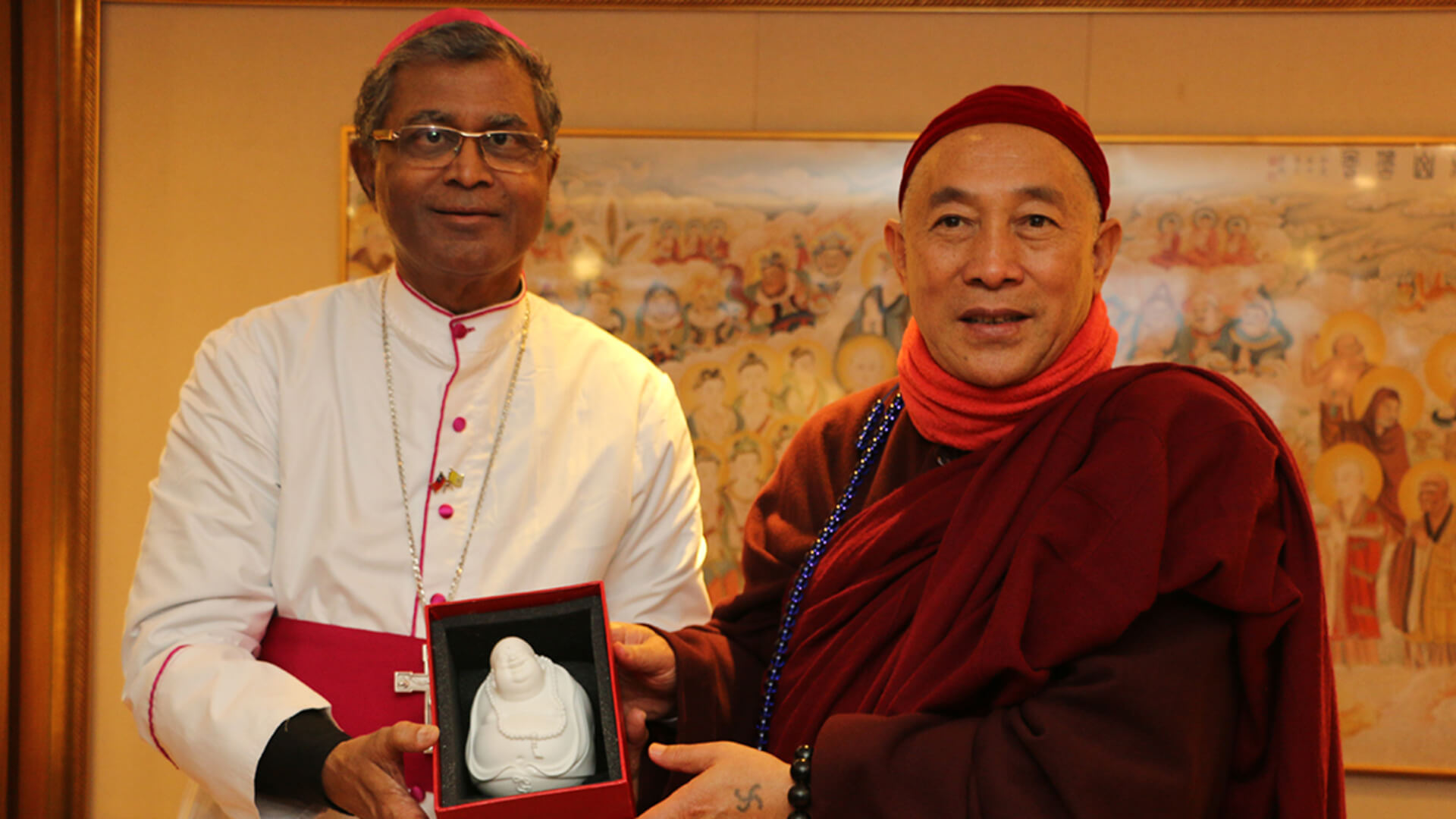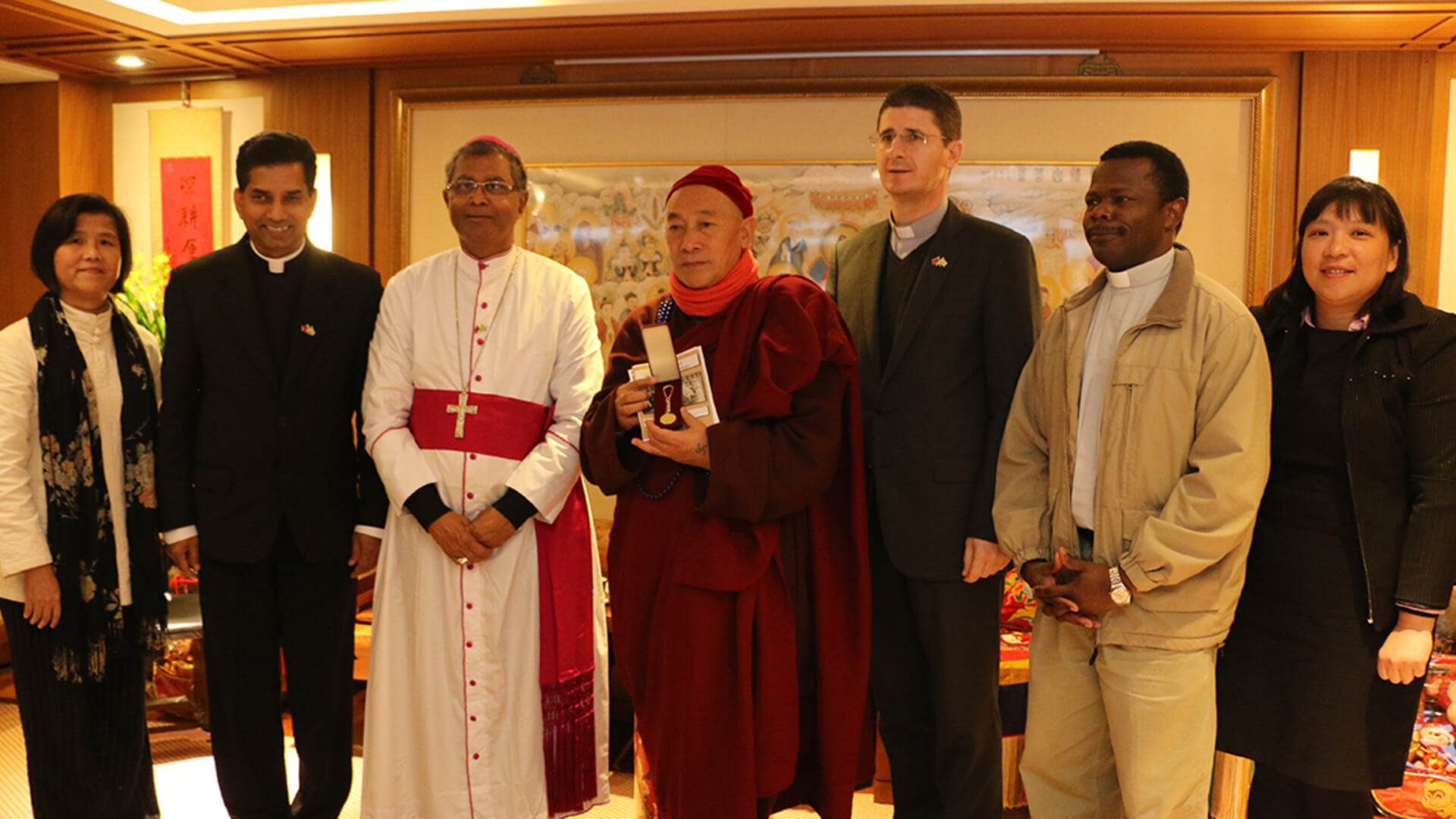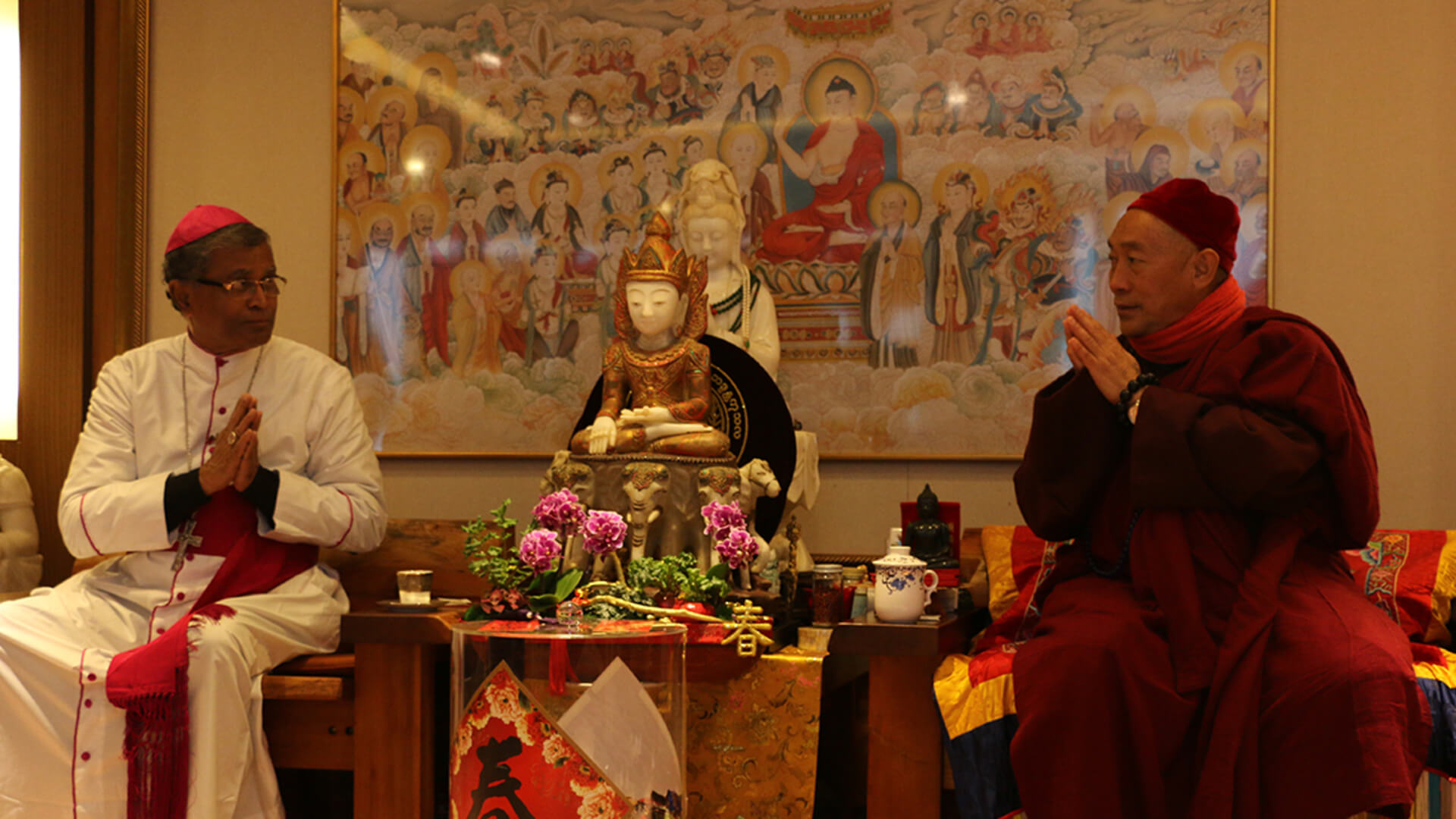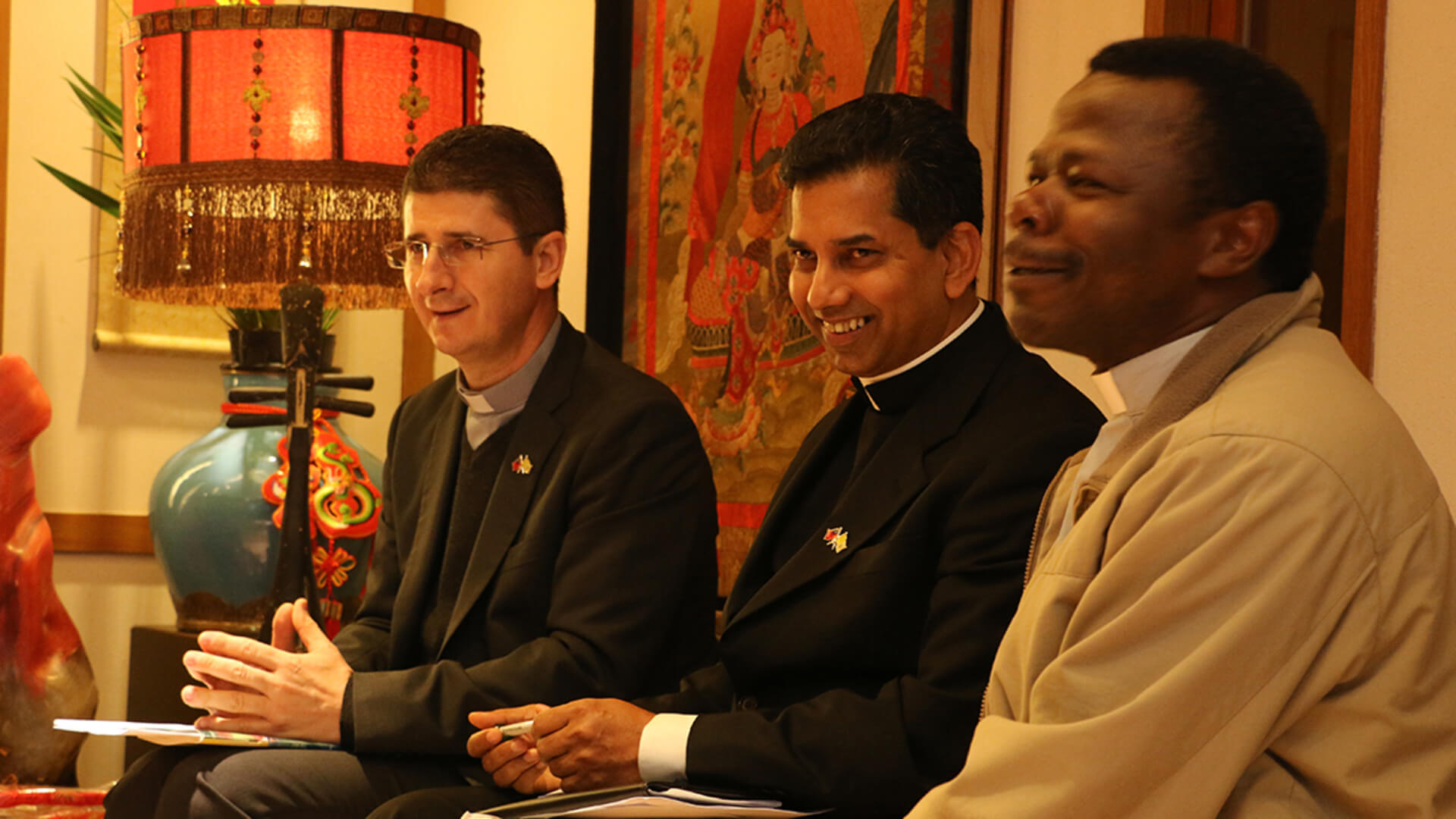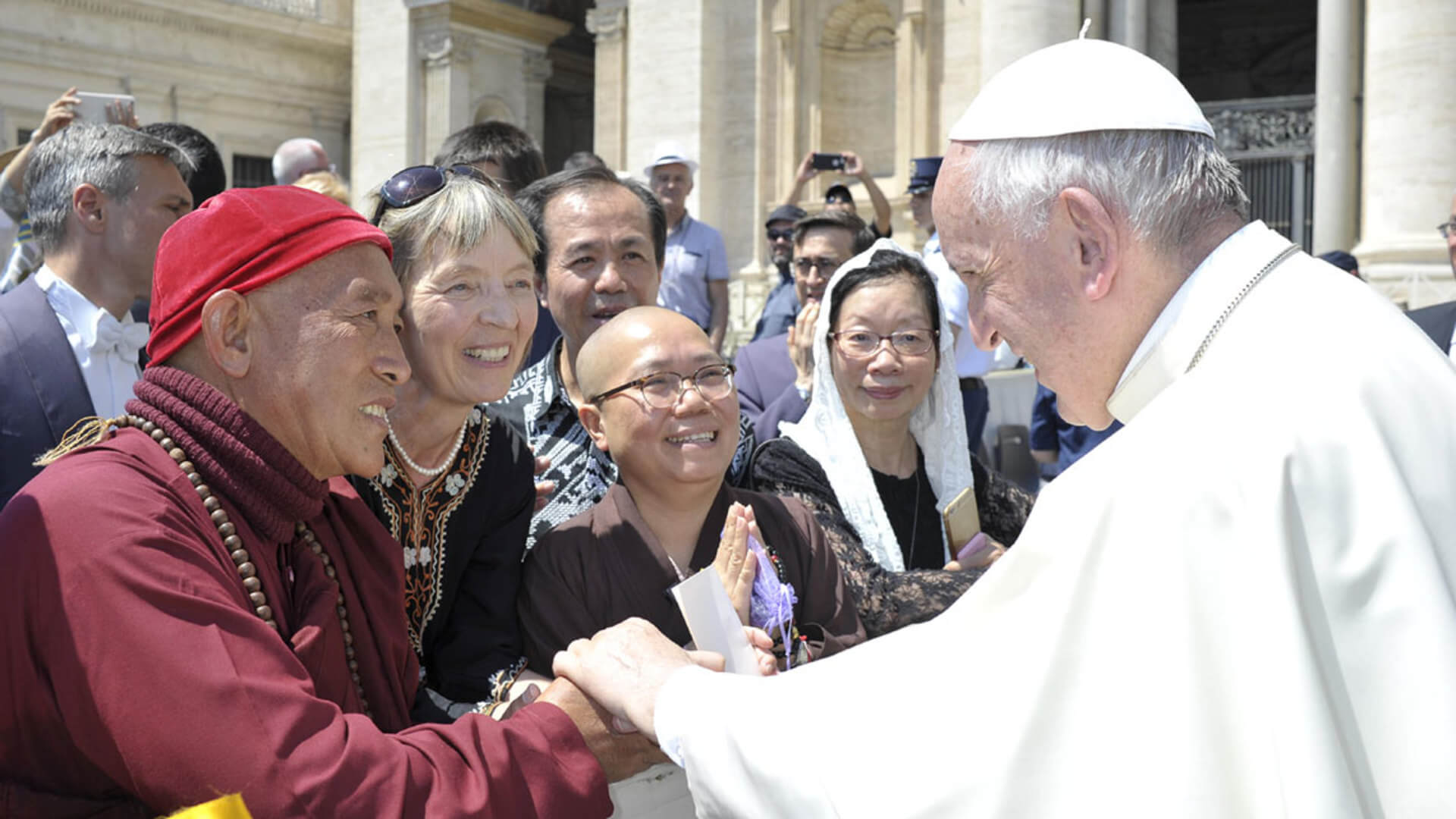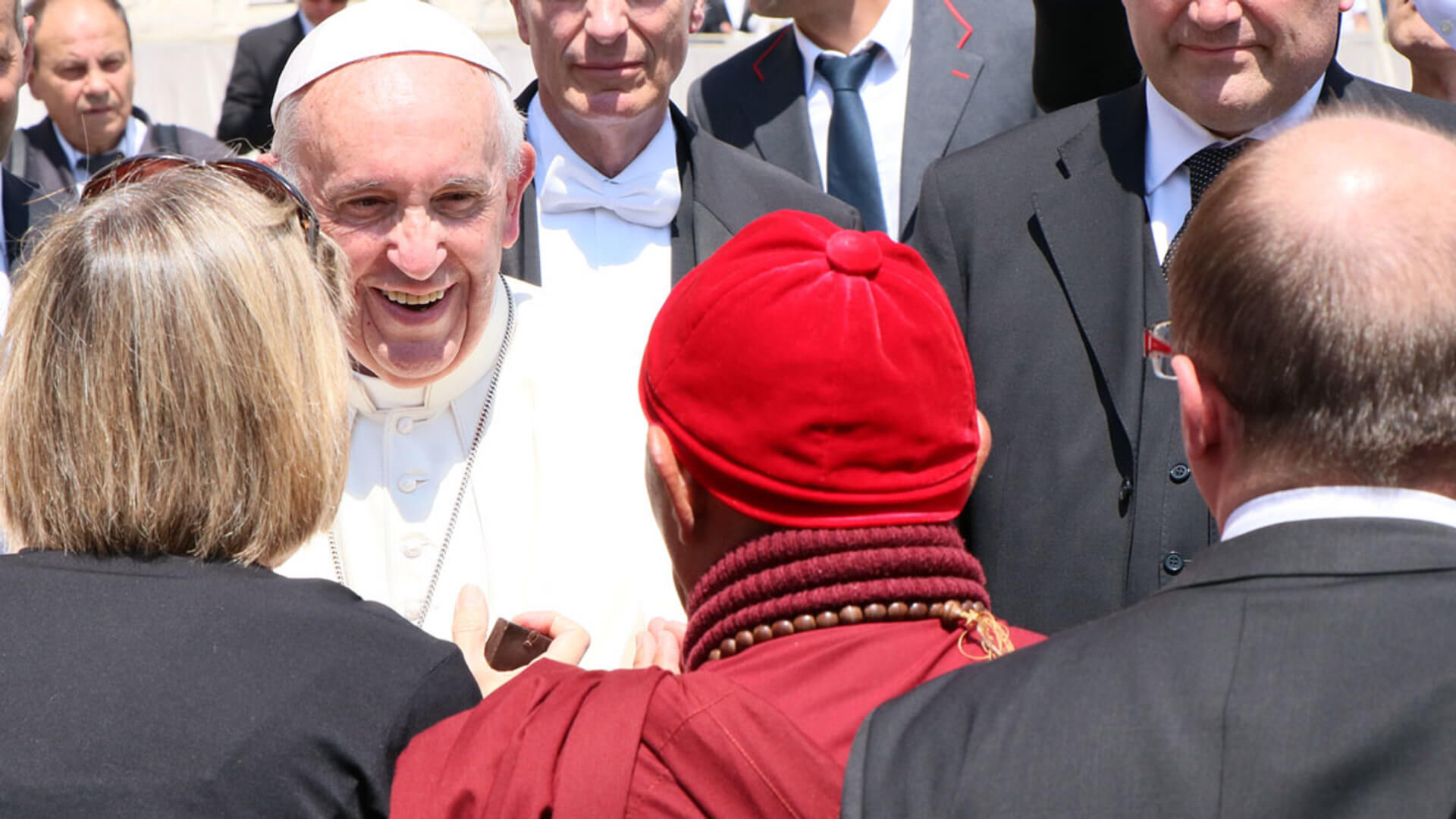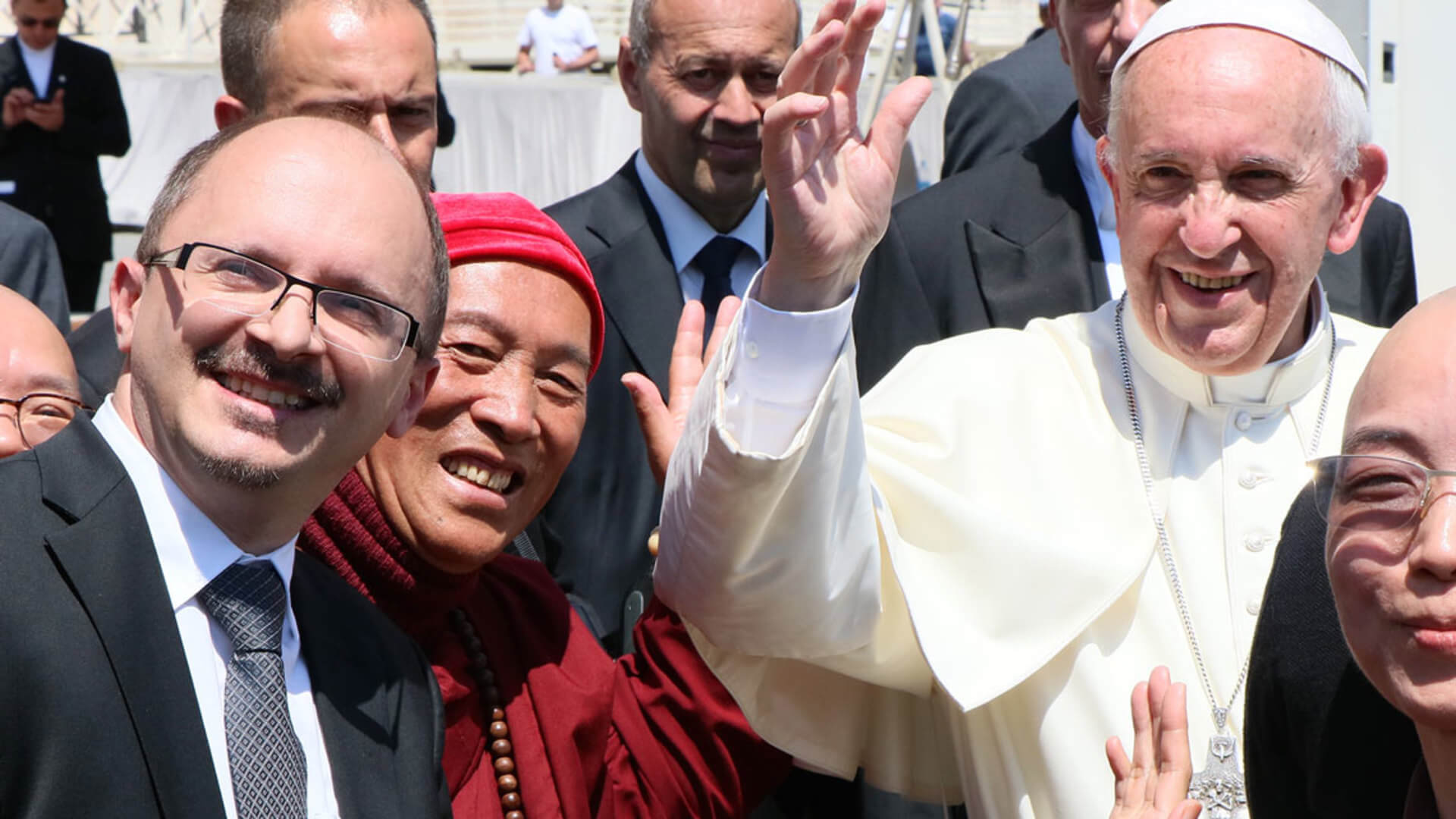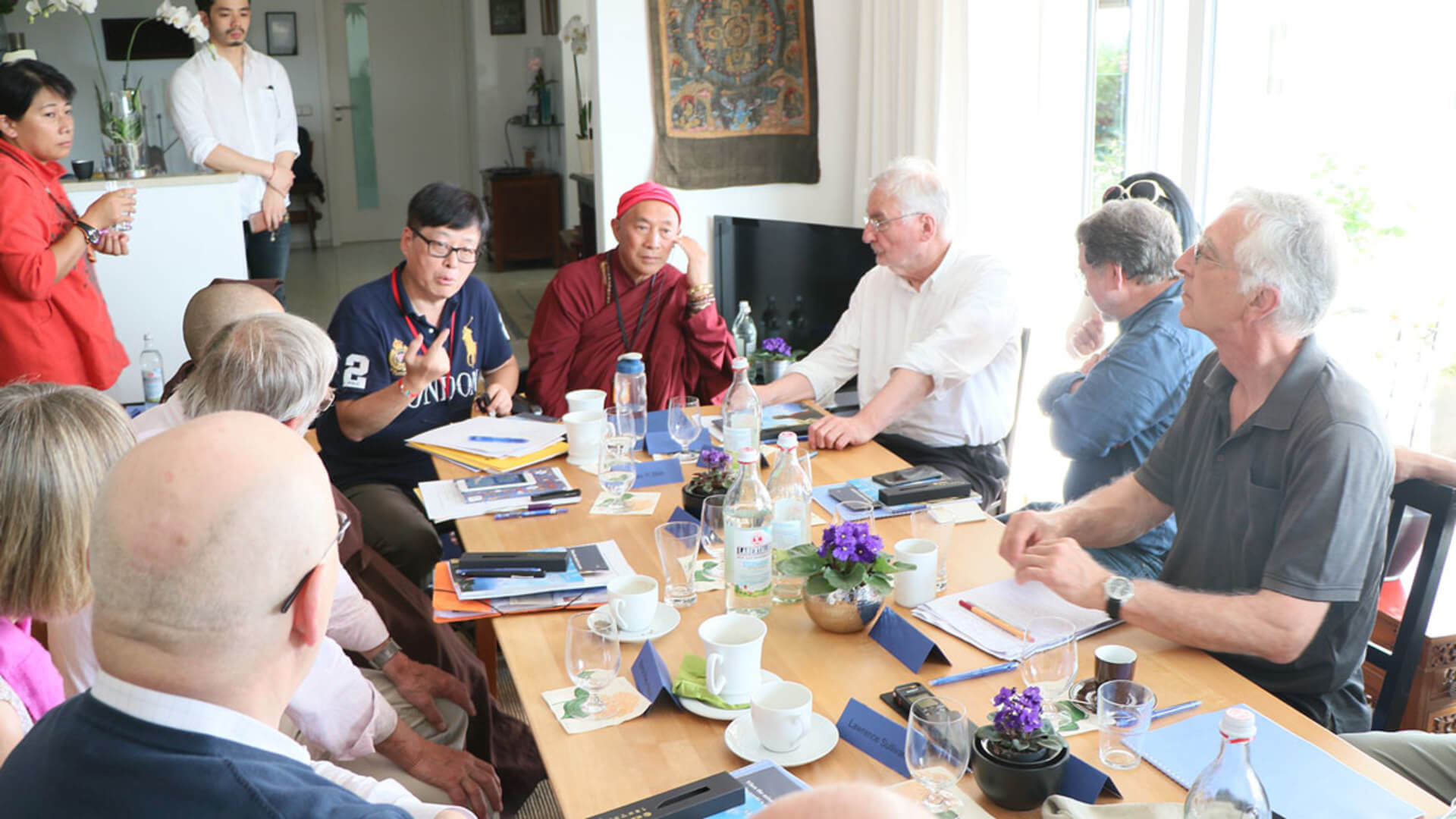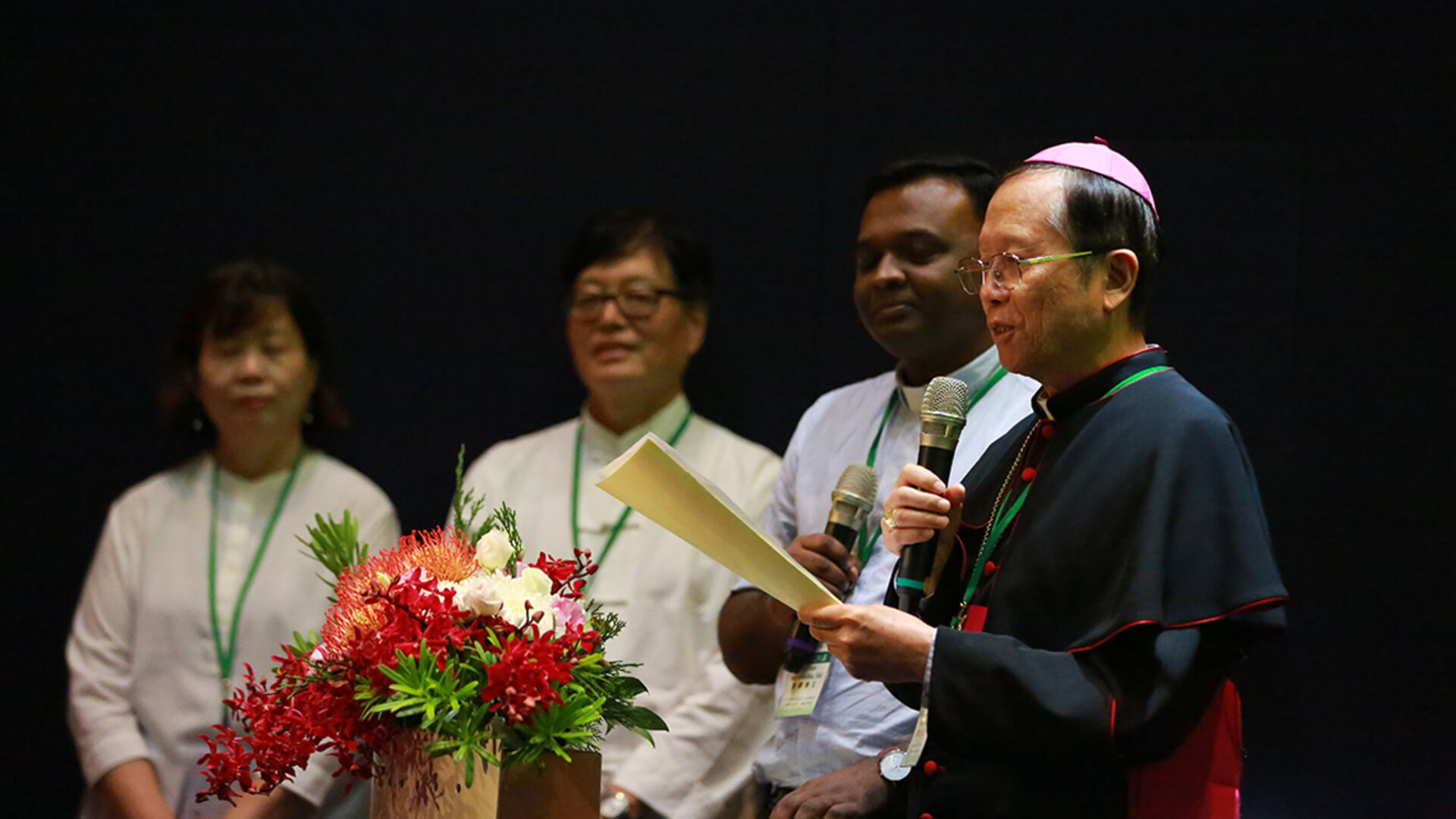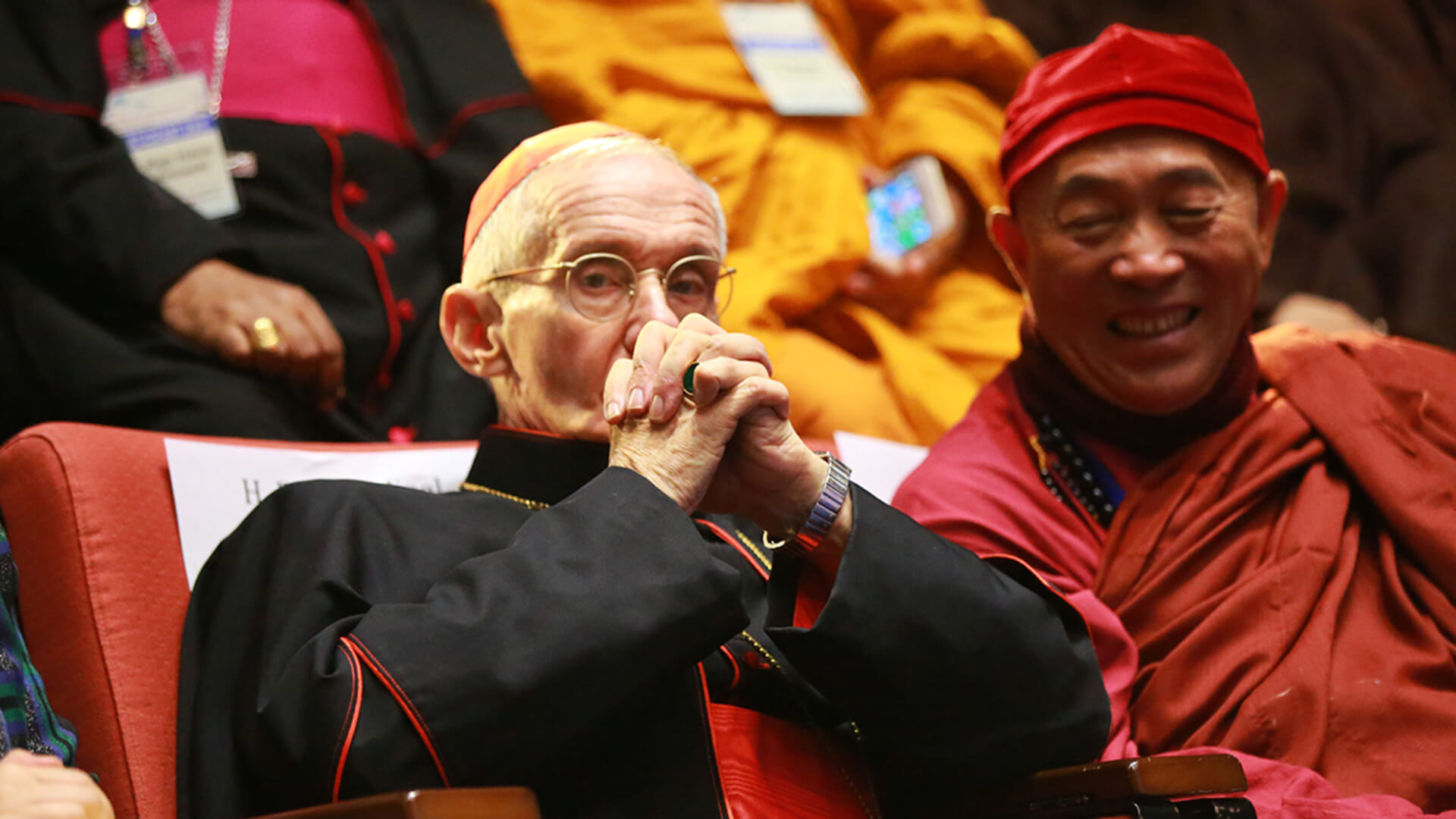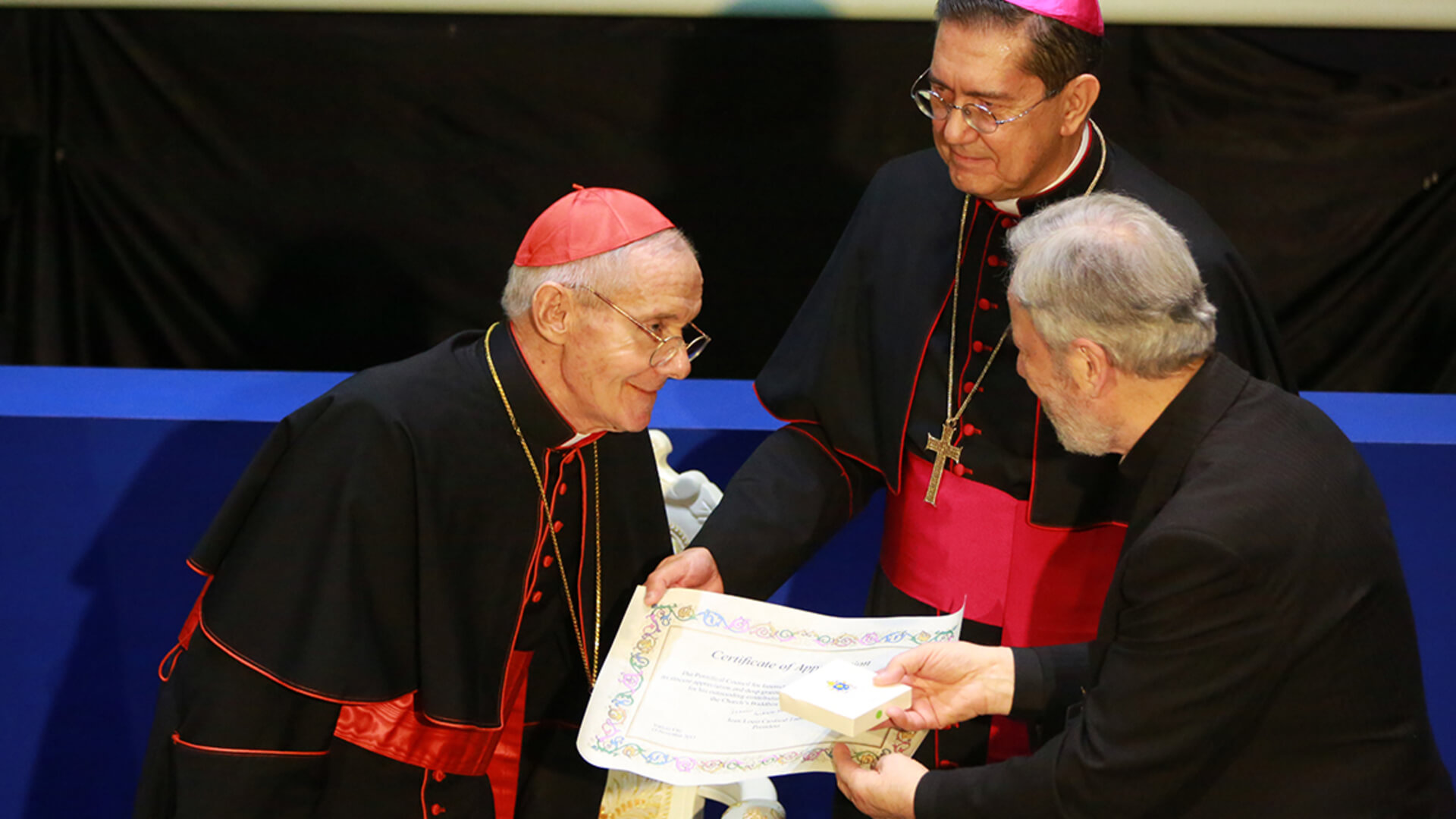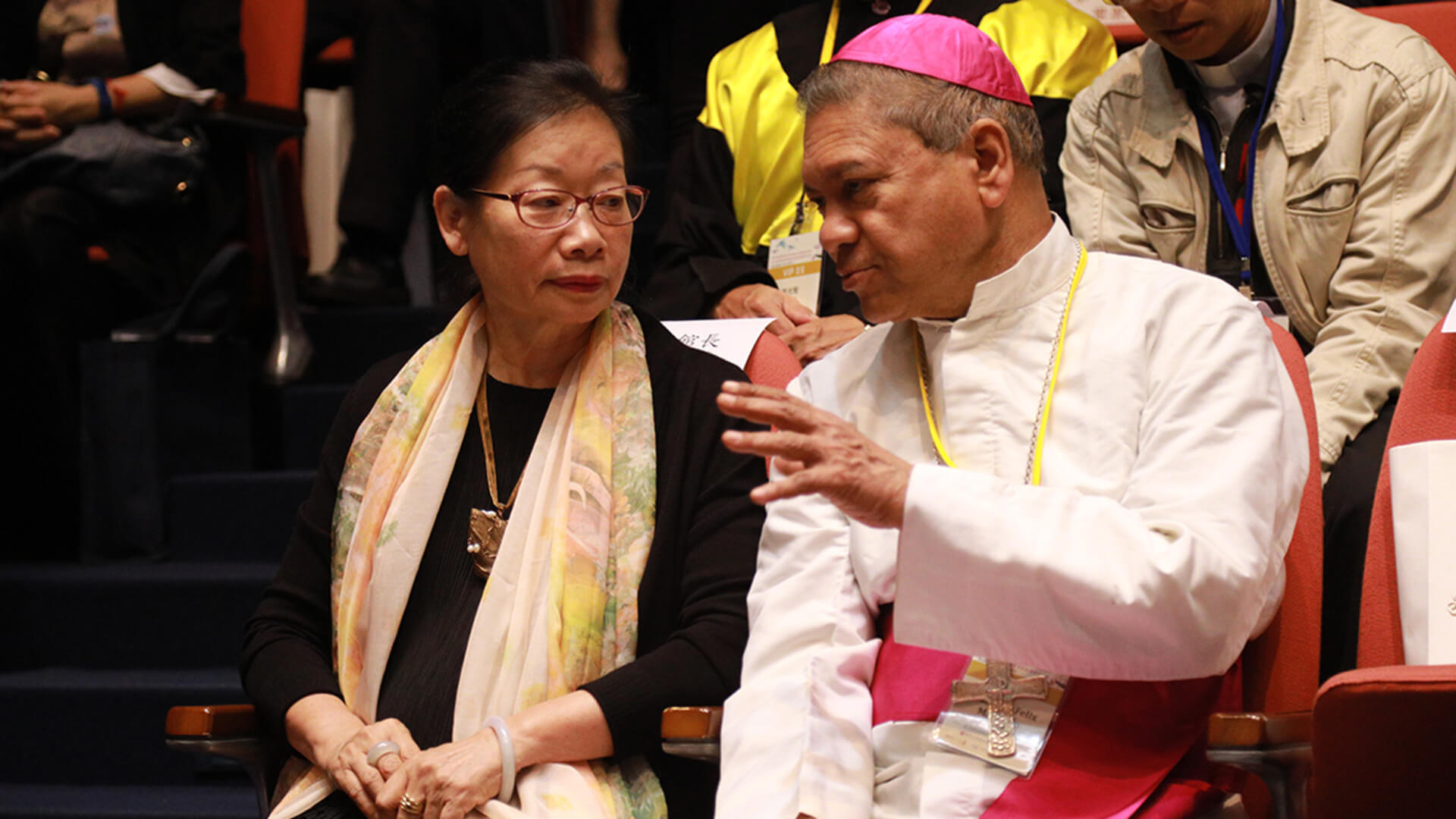A Preamble to the 6th Buddhist-Chirstian Colloquium
The humankind are life forms manifested by the convergence of body, mind and soul. Inter-people exchange in the form of social activities over time, however, gives rise to worries and doubts that blur our view of one another and hinder a ‘oneness’ between the mind and the soul. Faiths thus came into being, where people found solace and a way out from life’s murkiness onto a broadened horizon.
The world’s religions, by and large, share the same goal ultimately: the quest for life’s truth can be likened to stringing up the original inter-person purity by way of one’s own spirituality. And the only way to achieve that is to induce the good mindfulness into love and devotion to rinse your time-tested heart and to amplify the worldly warmth and benevolence.
In the long river of human history, there have been all kinds of different religions, ranging from pre-historic cults that worshipped nature’s mysteries to powerful faiths stemming from civilized societies. The teaching and promotion of the good mindfulness, nevertheless, has always been the very core of all religions. And, since the universal love triggers mindfulness most, the pursuit of world peace is no longer wishful thinking or beyond hope whenever there is love.
The magnitude of political tides and economic waves since ancient times has almost always given rise to misperception or wrongful understanding, at times even disputes and conflicts. Such observations prompted Ven. Chan Master Hsin Tao to lead the Ling Jiou Mountain (LJM) Buddhist Society in committing resources to initiating interfaith dialogues the world over and with emphasis on the world’s three leading religions Islam, Christianity, and Buddhism. And the efforts have been earning recognition and respect from home and abroad.
Examples of achievement over decades abound and it suffices to mention that there have already been 15 Muslim-Buddhist dialogues, that Master Hsin Tao was actively engaged in the World Summit of Religious Leaders, and that the Master is a frequent guest of honor to deliver the keynote at a number of significant world organizations. These go a long way to illustrate how keen and dedicated LJM has always been to interreligious dialogues.
Taiwan is admittedly but a small place, but the country enjoys religious freedom and people respect one another’s different religious culture. The land is not big in area, but big in heart and big on interfaith dialogues. Concrete examples of 2016 alone include a Taoist-Catholic dialogue between Taiwan’s Bao-An Temple and the Vatican, with the latter dispatching in the same year another delegation to conduct interreligious exchange with the Buddhist Tzu Chi Foundation.
Perhaps even more noteworthy is the 6th Buddhist-Christian Colloquium, set to take place in late 2017, November 13 to 15. The 3-day international symposium will be a joint effort by the LJM Buddhist Society, the Pontifical Council of Interreligious Dialogue, the Chinese Regional Bishops Conference, and the World Museum of Religions (WMR). Co-organizers will include important religious institutes such as Fo Guang Shan, the Taiwan Buddhist Tzu Chi Foundation.
The symposium will focus on religious and social influences on the world today, and discuss to help transform root causes of violence, in the hope that conflicts would cease. On the occasion of the Colloquium, religious leaders and representatives and scholars will gather together to voice their opinions and build interfaith bridges of friendship and understanding towards a collective mindfulness and a common hope for peace.
The 3-day Buddhist-Christian Colloquium will explore topics on causes of violence in the world, how to stop and eradicate violence, social violence nowadays, how to cultivate and nourish a non-violence lifestyle, how to redeem the past and heal the wounds by example of real life stories, and how to ultimately walk together on the path of nonviolence.
Meanwhile, the symposium will offer a fit platform for discussions about the future of interreligious dialogues between Buddhism and Christianity, as well as the future trend of, and outlook on, the Buddhist-Christian colloquium. The international event will be a good opportunity for everyone to take an in-depth look at the unreserved effort Taiwan’s Buddhism has been making for peace, and how it engages in interreligious dialogue and exchange, while striking a balance between the various similarities and differences, and moving ahead collectively towards world peace.
As Master Hsin Tao puts it in a public statement that each and every religion ought to own up the mission and get the word out about love and peace, and to join forces in protecting the Earth as our co-habitat and what we call home. And all religions should undertake to love the Earth and love peace, and never stop co-operations that push to make this world a better one.
People have become easily irritated and quickly enraged in our world today,
with global changes ranging from the environment to our set of values fluctuating quickly in scope and scale. Against such backdrop, how are religions to perceive the issue of globalization? Are religions faced with challenges from globalization of all sorts? And how do we end violence on different levels and of different kinds? How can we mitigate past wounds? And how, finally, do religions walk together on the path of nonviolence? What is the future of the Buddhist-Christian dialogue and what are the trends? These questions and their answers render it obvious that it will be worthy of your while to closely follow the 6th Buddhist-Chrtistian Colloquium.
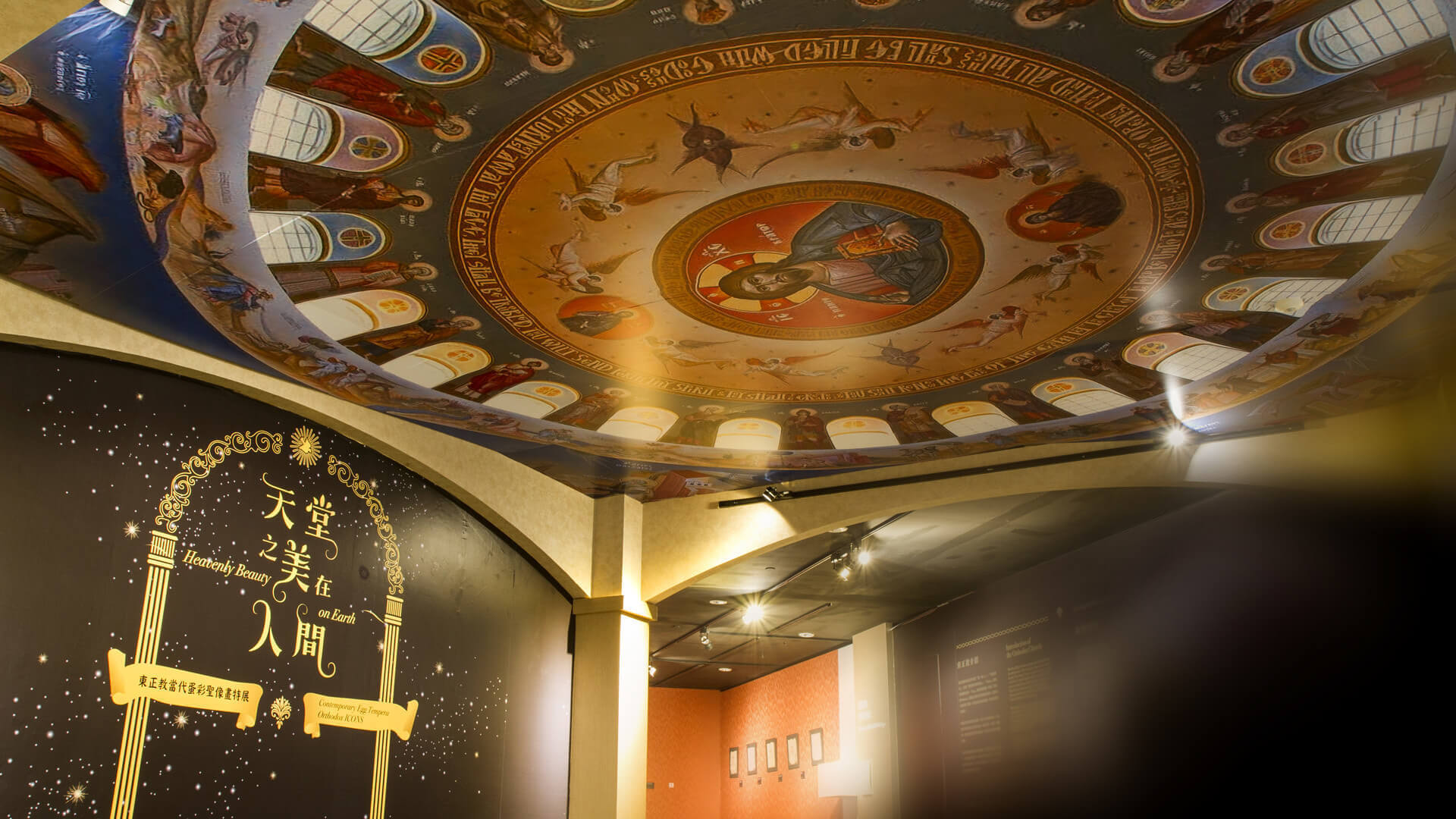
What is the Buddhist-Christian Colloquium about?
Religions help keep people calm and when the heart is at peace, approaches to work tend to be peaceful as well. Every religion owes its very existence to the significance it manifests. Unfortunately and more often than not, however, people with hidden agenda abuse religion to explain away their act of violence and hatred, while fellow religious followers work hard to defend and promote peace. It is therefore desired to go through inter-religious dialogue to abolish possible misunderstanding and identify common objectives. It is further hoped that the topical focus of peace can be internalized for optimal promotion to the extent that people adopt the mindset in their daily life and automatically reject violence while showing respect for other people.
The Pontifical Council for Interreligious Dialogue (PCID) initiated the 1st Buddhist-Christian Colloquium in 1995, with the international forum featuring different Buddhist traditions from all over the world and its stage set for Fo Guang Shan in Taiwan. Similar forum under the same banner started to take place consequently in Vatican, India, Japan, and Thailand. And now for the 6th Colloquium, the international symposium has grown in size and scale for its 2017 return visit to Taiwan.
Main objectives of the 6th Colloquium include to carry on the tradition of interreligious dialogue, as well as to innovate ever-deepening interfaith co-operations. The platform is for Christian representatives and Buddhist leaders from home and abroad to really listen to, and communicate with, one another. Ultimately, the Buddhist-Christian Colloquium lends itself aptly to the promotion of peace while amplifying the pressing necessity of a non-violent culture.
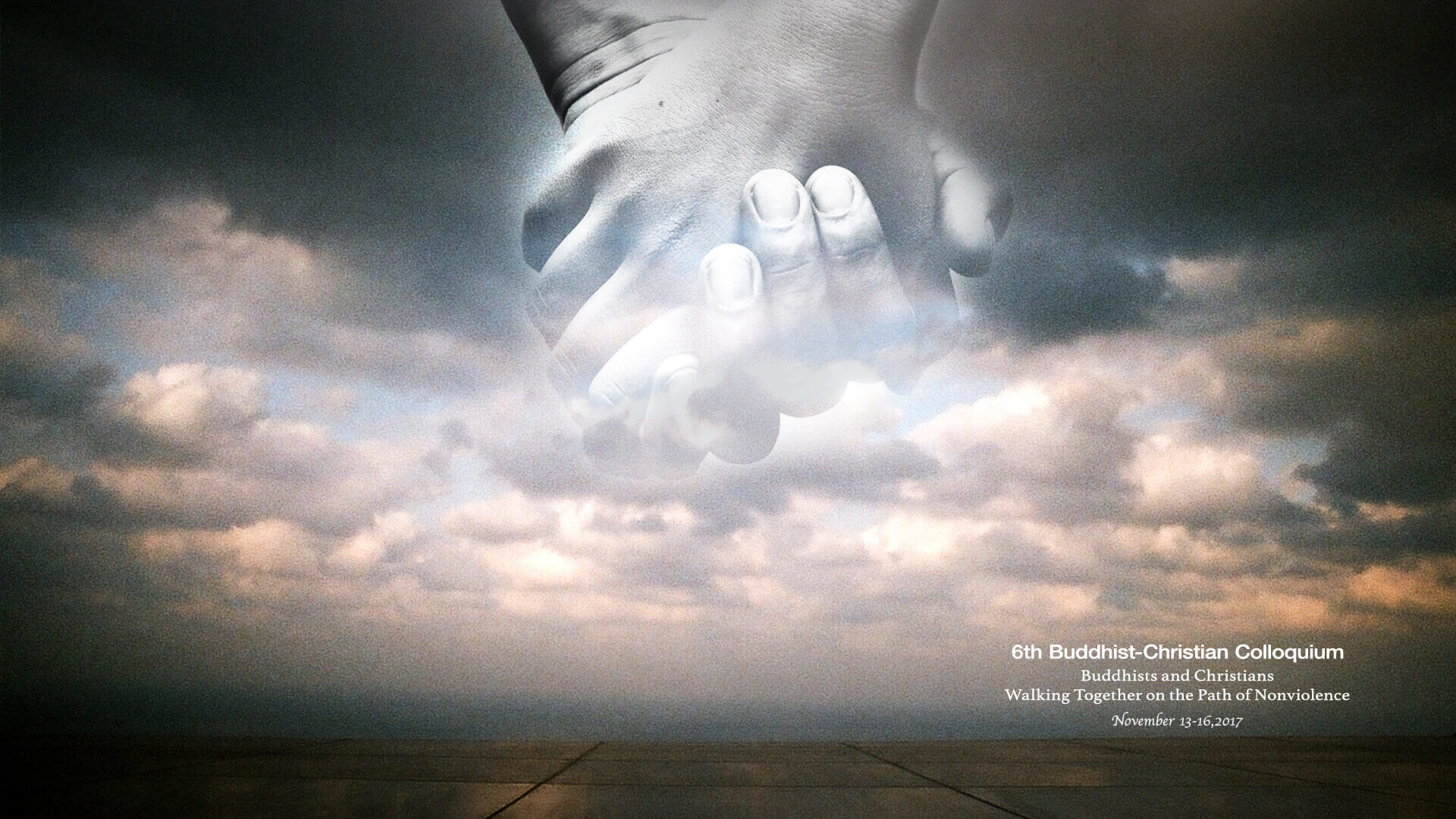
6th Buddhist-Christian Colloquium Theme and Objective - what makes them special
The 6th Buddhist-Christian Colloquium as an international symposium took place in Taiwan in 2017. The theme was “Buddhists and Christians Walking Together on the Path of Non-Violence”.
The symposium saw religious representatives and scholars from home and abroad gather to propagate their respective faiths, while aiming to irradicate world disputes ensuing from misunderstanding one another and/or even abuse of own religious interpretations. It is further hoped that interreligious dialogues will highlight the common ideal of peace and jointly promote it to become part of our daily life.
The international symposium was hopeful of sharing Taiwan’s experience in religious harmony with visitors from 18 foreign destinations, so that the world sees Taiwan’s unique environment, where different religions thrive side by side and share one another’s beauty and good in harmony. It was further hoped to deepen the friendship between the Vatican and our country, and to achieve even better understanding for more co-operations with religions in Taiwan on the basis of Pope Francis’s call for interreligious peace, to which Taiwan’s reality testifies and is fit for an international showcase.
At the same time, it was Vatican’s wish to intensify - via Buddhist leaders - exchanges with Taiwan in aspects of public good, religion, culture and academics. Thus it was hoped that there will be more concrete actions to promote care for, and welbeing of, Taiwan and the world.
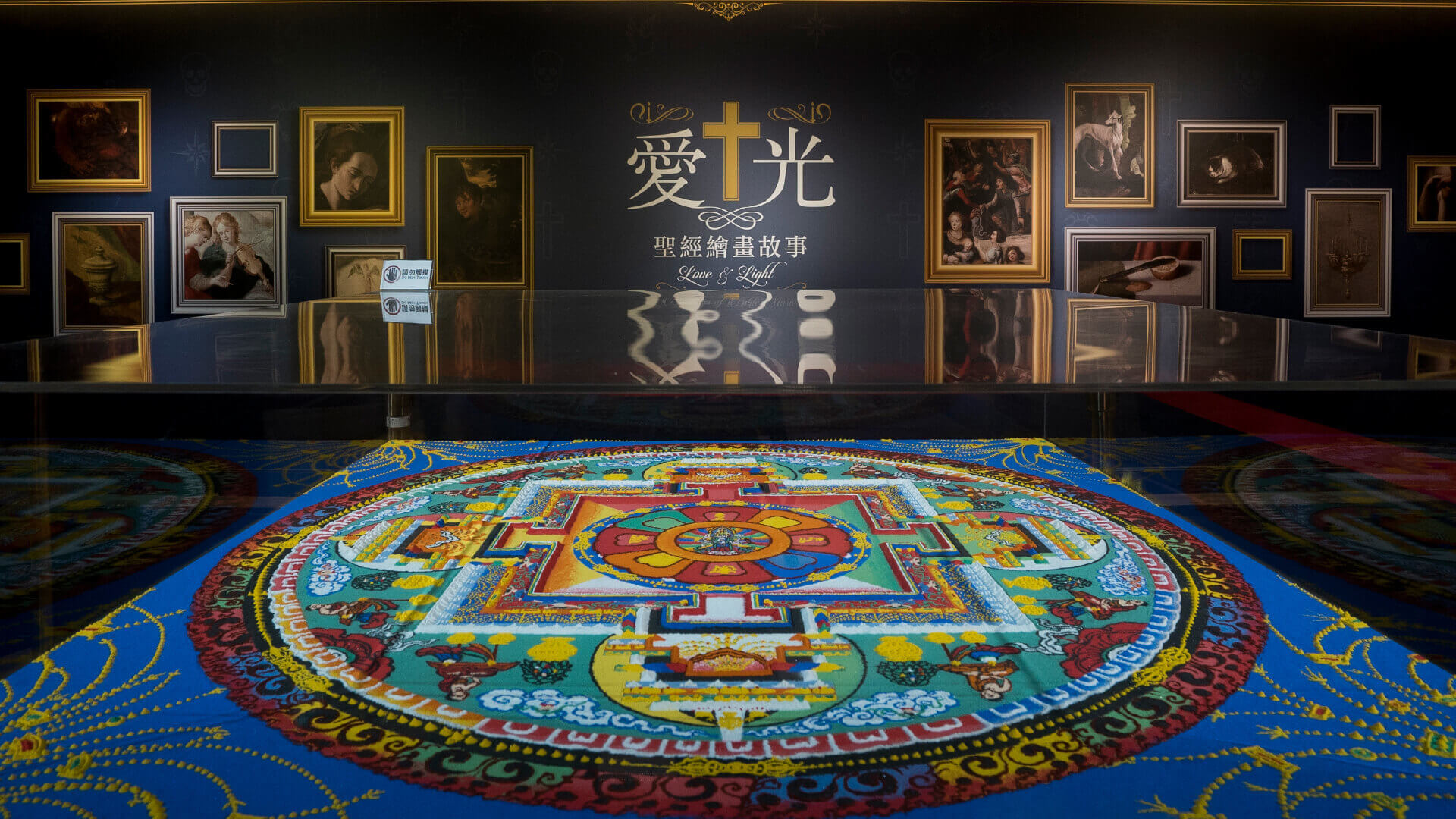
Buddhism and Christianity
In the Middle Kingdom, when did it all begin for Buddhism and Christianity to have initial contact? Archaeological findings and documented history prove that Christianity reached the Chinese capital in 635 A.D. in the form of the Nestorian sect. And as such it came to China from modern-day Syria over Persia and India, and was mistakenly referred to as the Persian religion and its place of worship the Persian temples. Only when the distinction between Arabia and Persia was understood, did the term change to the Jing religion.
According to the inscription on the Nestorian Stele (erected in 781 A.D. but excavated much later during the Ming dynasty), the leader of the Nestorian travelers was Alopen and ranking officials warmly welcomed their arrival in Xian. Consequently the scriptures they had brought were translated with royal patronage and a permit to propagate was granted, and the foreign faith quickly spread out in all directions. But the Tang emperor Wu Dzong, a devoted Taoist himself, ordered in 845 A.D. to ban and abolish Buddhism and the persecution eventually engulfed other non-indigenous religions and ended the 210 years of practice of the Jing religion during the Tang dynasty.
The second time Christianity and China had a relation was when it briefly reappeared during the Yuan dynasty under the Mongols. It was among many other religious practices introduced to China and were roughly referred to as “Hui-Huis” (possibly because of the Uygur Muslims already in China by then). It gained little popularity and vanished again when the country was restored to Chinese rule with the Ming dynasty.
People actually refer to the re-introduction of Christianity into China during the late Ming and early Ching period (late 16th and early 17th century) when they speak of ‘Christianity in China the 3rd time’. Roman Catholic Jesuits led by Michael Ruggieri reached China in 1552, but it was not until Matteo Ricci that the way for Catholicism into China became properly paved by 1583 when churches were allowed. Ricci’s way was to spearhead his missionary work by serving the imperial Chinese court with his scientific knowledge, as well as by building up rapport with ranking Chinese officials and scholars. Soon other Jesuits followed and names like Johann Adam Schall von Bell (German), Giulio Aleni (Italian), Ferdinand Verbiest (Dutch), and Martino Martini (Italian) all left remarkable legacy in China, but as Western scientists and experts rather than their missionary status.
The Roman Catholic Church, however, ruled to ban Chinese converts to hold burning incense sticks in rituals to pay homage to their ancestors. The ruling was met with strong protest and resistance that culminated in a countrywide counter protest later sanctioned by the Ching emperor KangXi as a total ban, and Western missionaries were expelled. His successor ordered in 1723 A.D. to forbid Christianity for a whole century, and missionary efforts and church work were thus rendered futile after all.
Contact between Buddhism and Christianity had been off and on throughout much of both the Ming and the Ching dynasties, albeit not widely known. An important discovery in the late 19th century changed all that and inter-religious contact between the two main faiths became more frequent: a Catholic brother by the name Thomas Merton came to realize that Buddhism and Catholicism share similarities when it comes to praying.
As for a formal exchange, it was the 1st Buddhist-Christian Colloquium in 1995 at Fo Guang Shan in KaoHsiung, Taiwan, with the theme on “Similarities and Differences between Buddhism and Christianity” (officially the wording was ‘convergence and divergence’). The initial Colloquium thus marked a first step that is historically significant for both inter-religious harmony and world peace.
In terms of their respective doctrines, there are differences as well as similarities between Buddhism and Christianity. In essence, major differences include: Catholicism holds views that all things were created by God, that people need redemption, and that things happen by God’s will. Buddhism, on the other hand, argues that everything is due to the karma of cause and effect, that everyone controls his/her own destiny, and that Shakyamuni discovered the law of life and death for our guidance. Another key difference lies in the perceived status of Buddha in Buddhism versus that of Jesus in Christianity.
The similarities, on the other hand, include that there are strict structural procedures to follow in the education, training, and incubation of monks and nuns as well as priests and sisters before they can be ordained. Once the vow of celibacy is taken, it must be strictly observed in addition to pertinent stipulations of the communities they belong to. There is no private possession and they dedicate themselves to lifelong services of people. When a priest or a nun receives an order to go somewhere and serve, they view it as “God’s plan”, and that spirit echoes a Buddhism pledge ‘to willingly serve and convert the countless sentient beings’.
The chart below offers an at-a-glance comparison between Buddhism and Christianity.
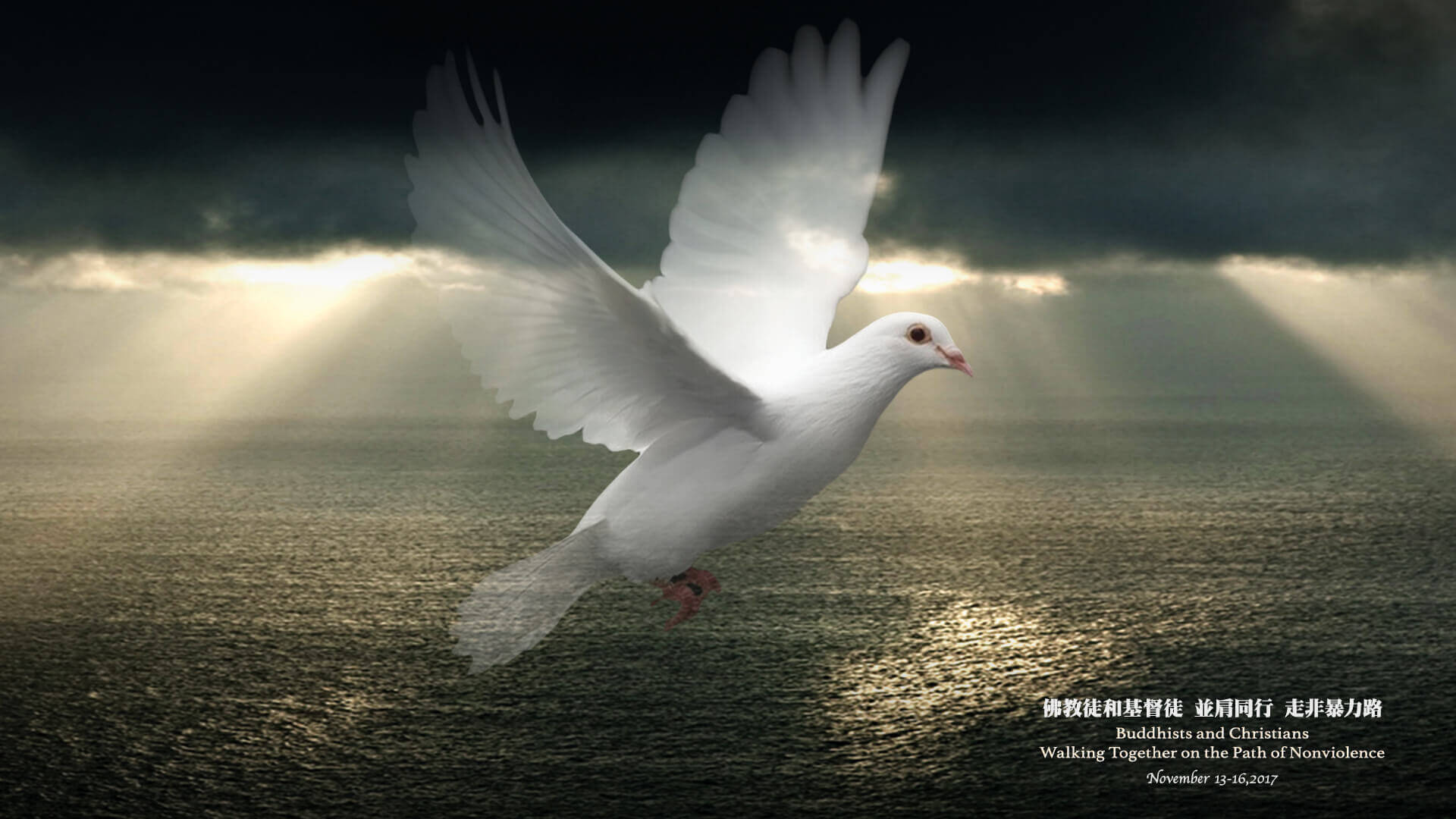
Propagation of Christianity and Catholicism in Asia
The Christian sect Nestorius reached China from modern-day Syria in the 6th century C.E. and was referred to as the Jing-religion. After its introduction into China during the Northern Wei period of China’s Northern-Southern Dynasties many Jing-religion manesteries (known as Da-Chin Temples) were built during the early years of the Tang Dynasty, which however came under attacks by Buddhists and Taoists during the reign of China’s sole empress Wu Tze-Tian.
According to the Nestorian Stele (erected in 781 C.E. and excavated during the MingDynasty
(https://en.wikipedia.org/wiki/Christianity_in_China#/media/File:Nestorians-1-.jpg), the Christian Alopen brought religious scriptures to Xian and was granted audience with the Tang emperor Li Shih-Min, who authorized construction of places of worship that made widespread of the Jing-religioin possible. A great set-back for the Jing-religion took place, when Emperor Wu Dzong went for prosecution of Buddhism and torched tens of thousands of Buddhist temples, with many Jing-religion monasteries likewise burnt to ashes. The Christian sect experienced a short-lived revival in China during the Mongolian Yuan Dynasty, then diminished again when the Ming Dynasty restored the country back to Chinese rule. The number of Christian (converts) in China decreased sharply until Catholic missionaries from Europe reached the Middle Kingdom during the 16th century C.E.
Jesuits missions reached the Chinese court during the Ming Dynasty, and translation (of religious terms) at the time directly borrowed from Taoism and Buddhism. Obvious examples suffice: ‘Shang Di’(Highest Emperor) is usually reserved for the name of the Taoist diety Jade Emperor, but became an exclusive term for Jehovah for Chinese Protestants. Or, ‘Sheng Mu’(Holy Mother) for either Buddha’s Mother or the Taoist Goddess of Mercy.It was not until the late Ching Dynasty that Chrtistianity - spearheaded by Catholicism and the Protestants - began to flourish in China and the number of their respective converts and believers surged sharply.
In Sri Lanka, traditional Buddhism was consequently subject to challenges by, and influences of, Christianity under a string of succession of colonial rules by the Portugese, the Dutch, and the British. A revival of the Sri Lankan Buddhism began to take up shape after a widely followed debate between a buddhist monk Migettuwatte Gunannanda Thera and a Protestant priest in the 19th century, and finally triggered by the American Buddhist Henry Steyr Alcor.
In South Korea, Hong Kong, Macau, Singapore and Taiwan, there are meaningful statistic number of Christians in the general population, whereas Buddhism and Taoism dominate. The number of Christians is understandably much smaller in countries like Thailand and Myanmar, where traditionally Buddhism has been mainstream.
